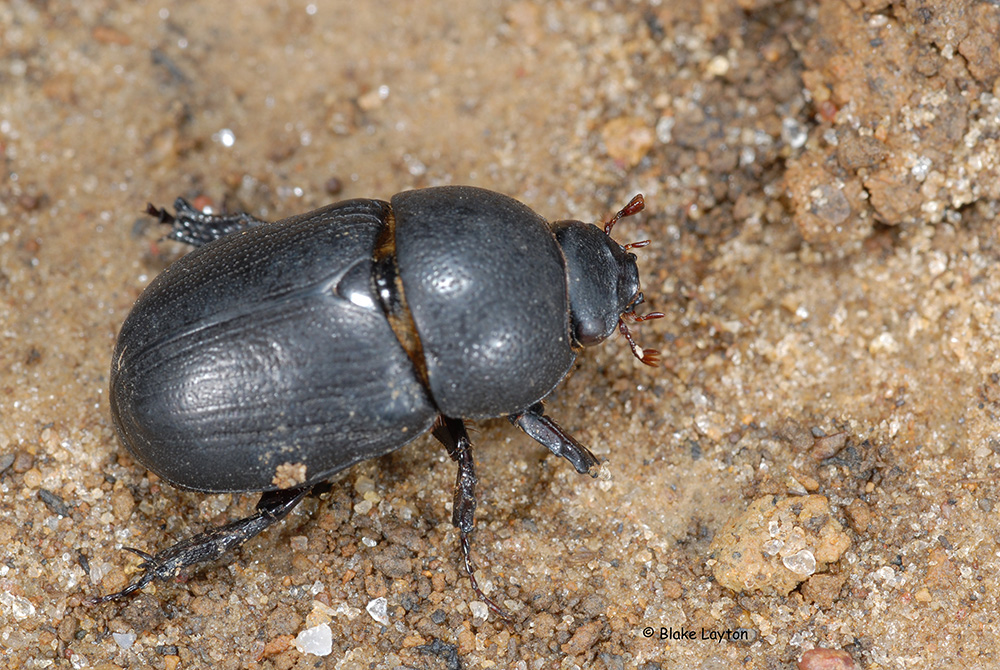Sugarcane Beetle | Vol. 3, No. 6

Euetheola humilis
Order: Coleoptera
Family: Scarabaeidae
You have probably seen these sturdy, black, ½ inch long beetles around gas pumps in the spring or fall. Some years they are so numerous you can’t help noticing them. They accumulate there because they are attracted to the lights at night. If you have ever picked one up and held it in your hand, you know these are powerful little beetles with a strong digging instinct. That is why they sometimes cause problems in urban settings. Once they are attracted by lights and crash land around a building, the beetles tend to dig into any soft substrate they can find. This can result in damage to caulking around windows, seals around vehicle windshields, sealing points of flat industrial roofs, and similar types of physical damage that can cause water leaks or other problems. Adult beetles also damage field crops such as corn and sweet potatoes. Fortunately, their populations are cyclic and heavy populations do not occur every year. Here in Mississippi, our last really big outbreak occurred in 2008. Although there is only one generation per year, there are two flights of adults, one in the spring as overwintered adults fly in search of places to lay eggs, and a second in the fall as newly emerged adults fly in search of overwintering sites. The larvae are a type of white grub that develops on roots of grasses and weeds during the summer.
Control: Corn farmers can use preventive at-planting insecticide treatments to help reduce damage from sugarcane beetles. In urban settings where heavy flights of beetles are causing problems around buildings, good light management practices are the best defense. During heavy outbreaks, having someone patrol the affected area early each morning and physically sweep up or vacuum beetles that flew in during the night can also help limit damage due to beetles digging in caulking and other soft materials.
See an archived article from February 2009 to learn more about sugarcane beetles and the problems they can cause during heavy outbreaks.
Blake Layton, Extension Entomology Specialist, Mississippi State University Extension Service.
The information given here is for educational purposes only. Always read and follow current label directions. Specific commercial products are mentioned as examples only and reference to specific products or trade names is made with the understanding that no discrimination is intended to other products that may also be suitable and appropriately labeled.
Sign up to receive Bug's Eye View.

